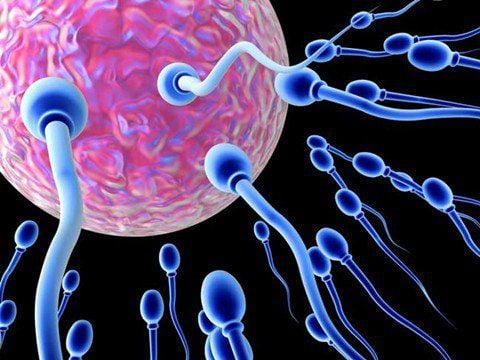This is an automatically translated article.
The article is professionally consulted by Master, Doctor Vo Thien Ngon - Urologist, Department of General Surgery, Vinmec Da Nang International General Hospital.Most men are very concerned about penis issues such as how long is enough or what to do with a small penis. But aside from size, there are still some surprising things you don't know about your penis.
1. What is a normal penis?
What is penis in english? Penis is translated from English as "Penis". According to experts, the penis needs to be erected regularly as an essential exercise to maintain optimal size and shape.To keep the male penis healthy, smooth muscles must be supplied with regular oxygen through blood flow to the penis during erection. Experts say that without regular erection, the penile tissue can become less elastic and shrink, which will make the normal penis 1-2 cm shorter.
For men with normal health but rarely getting an erection during the day because of not being exposed to sexual stimulation, there is no need to worry. The brain will automatically maintain the function of the "boy" appropriately. Specifically, impulses from the brain induce erections during rapid eye movement (REM) sleep. Whether you're having a hot dream or having a nightmare, your penis will salute during this sleep cycle.
There are still some cases of men unable to get an erection, such as those with related nerve damage or blood vessel damage due to diabetes. The vacuum pump device, with the function of pumping blood to cause the penis to stretch, can help men with physical erection problems maintain a healthy "weapon".
2. Penis size when "soft" and "hard" are very different

Although not of much clinical significance, these data can significantly change the way in which penis size is assessed under normal circumstances. This means that not every guy who has a large penis when it's flaccid will have a much longer erection when it's soft. And conversely, the guy with a normal penis that looks quite short and worried about a small penis, can achieve a surprising size during an erection.
An analysis done by sexologists shows that short "guns" tend to increase in length by about twice as much in battle, outperforming long "guns". According to some data, about 12% of men with penises achieve up to a third of their total length during erections and about 7% double their length.
3. Pleasure Zone
Many people believe that the underside of the penis area is the most sensitive to sexual stimulation. The researchers therefore assessed the pleasure levels of different areas of the healthy man's body, not just the genitals but including the scrotum, anus, nipples, and neck.According to the results reported in the International Journal of Urology, the underside of the glans and the underside of the shaft of the penis are the most sensitive for the majority of men. This is followed by the top, left and right sides of the glans, the sides of the penis, the top of the trunk, and the foreskin (for uncircumcised men).
4. Penis becomes less sensitive with age
Studies show that the penis loses its sensitivity as men age. However, it is still not possible to conclude the exact ratio because there are different ways to stimulate the penis and measure sensitivity. In general, penile sensitivity is measured as the lowest "sensory threshold" at which a man can still perceive stimulation.Although there are differences between studies, the data show a clear trend that penile sensitivity begins to decrease from age 25 onwards. The sharpest decline in sensitivity is between 65 and 75 years of age. However, older men are often more concerned with the difficulty of erection or delayed ejaculation than with the decrease in sensitivity to stimulation.

5. Can use ejaculate machine for men
Some vibrating devices for the penis are very effective for male patients with spinal cord injuries. A special medical vibrator that helps men ejaculate when placed on the underside of the head of the penis. These vibrators do not use force but are tuned to operate at the right frequency or amplitude, helping to stimulate the nerves involved in ejaculation.Although most men don't need a device to stimulate orgasm, patients with delayed ejaculation and difficulty "climaxing" should consider trying this personal massage vibrator. In addition, if you do not have any physiological health problems, the use of such devices is simply up to your needs.
6. Penis can be twice its size
Surely guys who are wondering how much penis size is enough or worried about a small penis, will be very proud if they know that: men's penises are actually twice as long as what they are. can see. Explaining this, experts have confirmed that half of the length of the "boy" lies in the male body.Through medical imaging, the erect penis has a folded shape almost like the letter V (like a weapon called a boomerang). Similar to a tree that only sees its height above the ground, we will not be able to see the base of the penis that is located inside the pelvis and connected to the pubic bone.
7. The penis is a habitat for bacteria
Basically, the human body is an ecosystem and the intimate area is home to a diverse community of bacteria. According to genetic tests, a total of 42 specific types of bacteria were identified that reside on the skin of the penis.However, the diversity and abundance of bacteria that exist on the uncircumcised and circumcised penis is not the same. Specifically, the fold inside the foreskin of the normal penis is a good environment for some bacteria that don't need oxygen to thrive. As a result, there are fewer anaerobic bacteria on the dry skin of the penis after circumcision.
One theory is that anaerobic bacteria help the immune system to respond more quickly against HIV-infected cells. This may partly explain why circumcision may reduce the risk of HIV infection.
8. Majority of uncircumcised men

The American Academy of Pediatrics (AAP) and the American College of Obstetricians and Gynecologists confirm the health benefits of male circumcision far outweigh the risks posed by the procedure. The advantages of circumcision include:
Less transmission of sexually transmitted diseases to sexual partners; Reduce the risk of HIV infection by up to 60%; Limit the growth of penile cancer; Prevention of urinary tract infections. Therefore, WHO and the Joint United Nations Program on HIV/AIDS also recommend male circumcision as a preventive measure against HIV.
If you have any problems/questions about masculinity such as: Erectile dysfunction, premature ejaculation, circumcision...you can visit Vinmec International General Hospital. The advantages of visiting at Vinmec include:
Simple and fast procedures. Enthusiastic advice and support, reasonable and convenient examination process. Comprehensive facilities, including a system of clinics and consultations, blood collection room, dining room, waiting area for customers... The medical staff has high professional qualifications, style. Professional, caring way of working.
Please dial HOTLINE for more information or register for an appointment HERE. Download MyVinmec app to make appointments faster and to manage your bookings easily.
Reference source: webmd.com













